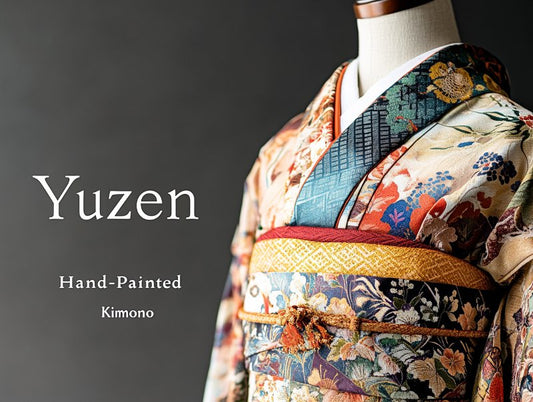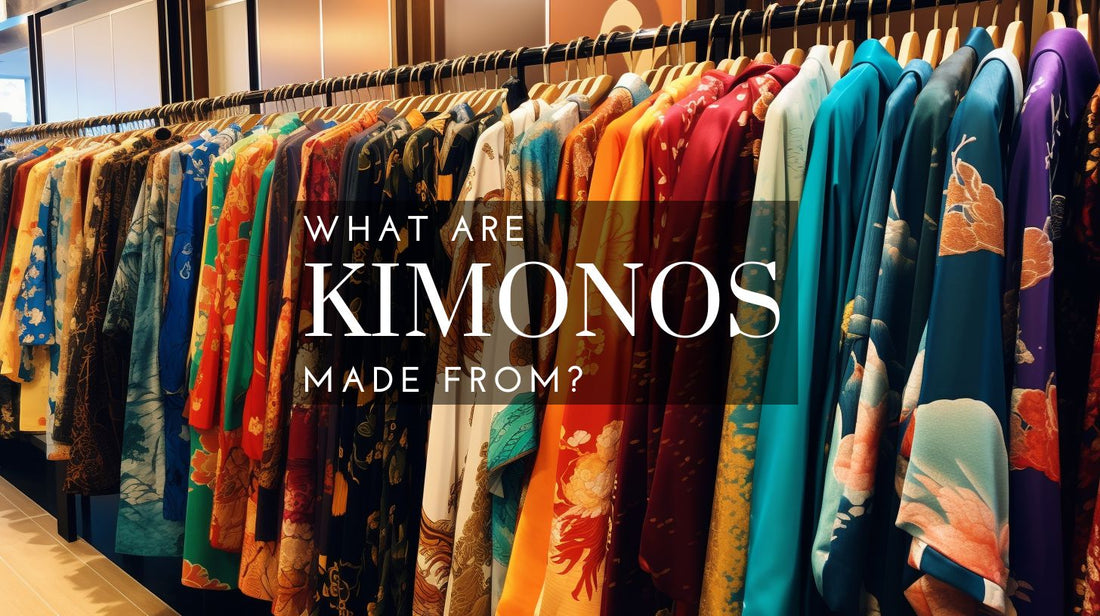
What Are Kimonos Made From?
Share
When we think of Japan, a vibrant image often comes to mind - a vision of a graceful kimono wearer against a backdrop of cherry blossoms. But what materials bring this image to life? Let's embark on a journey to uncover the fabric of kimonos.

The Cultural Significance and Origins of Kimonos
Originating from Japan's Heian period (794-1185), kimonos embody the nation's cultural aesthetics and social customs. They are more than just garments - they are wearable pieces of art, history, and tradition.
If you are interested in the fascinating history of Kimonos you'll love this article.
Ancient Kimono Materials
In the early stages of its evolution, kimonos were made from 'Asa,' 麻布 a term encompassing hemp and other linen-like fabrics. Weaving these natural fibers was a labor-intensive process, adding considerable value to the resulting garments.

Evolution in Kimono Materials
Over centuries, the material composition of kimonos transformed. As Japan's trade networks expanded, so did access to new, exotic fabrics. Among these, silk and cotton emerged as favorites, each adding a unique charm to the kimono's character.

The Beauty of Silk in Kimonos
Silk, the queen of fabrics, enjoys a special status in the kimono world. Its lustrous texture and dye-friendly nature make it a perfect medium for expressing the artistic splendor of kimonos.

Silk: A Fiber with a History
Silk isn't just a material; it's a natural fiber with a captivating history. Produced by silkworms, it has been spun into fabric for over 5,000 years. Its distinctive sheen and luxurious feel have made it a prized possession in many cultures, not just in Japan.

Types of Silk Used in Kimonos
Kimonos use different types of silk, each with its unique attributes.
'Chirimen' is a crepe-like silk used in formal kimonos.
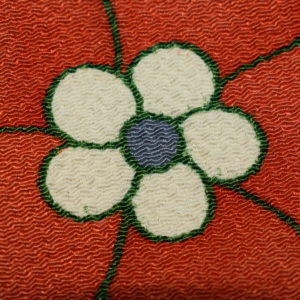
'Habutai' is lighter and softer, and shimmering material ideal for summer kimonos.
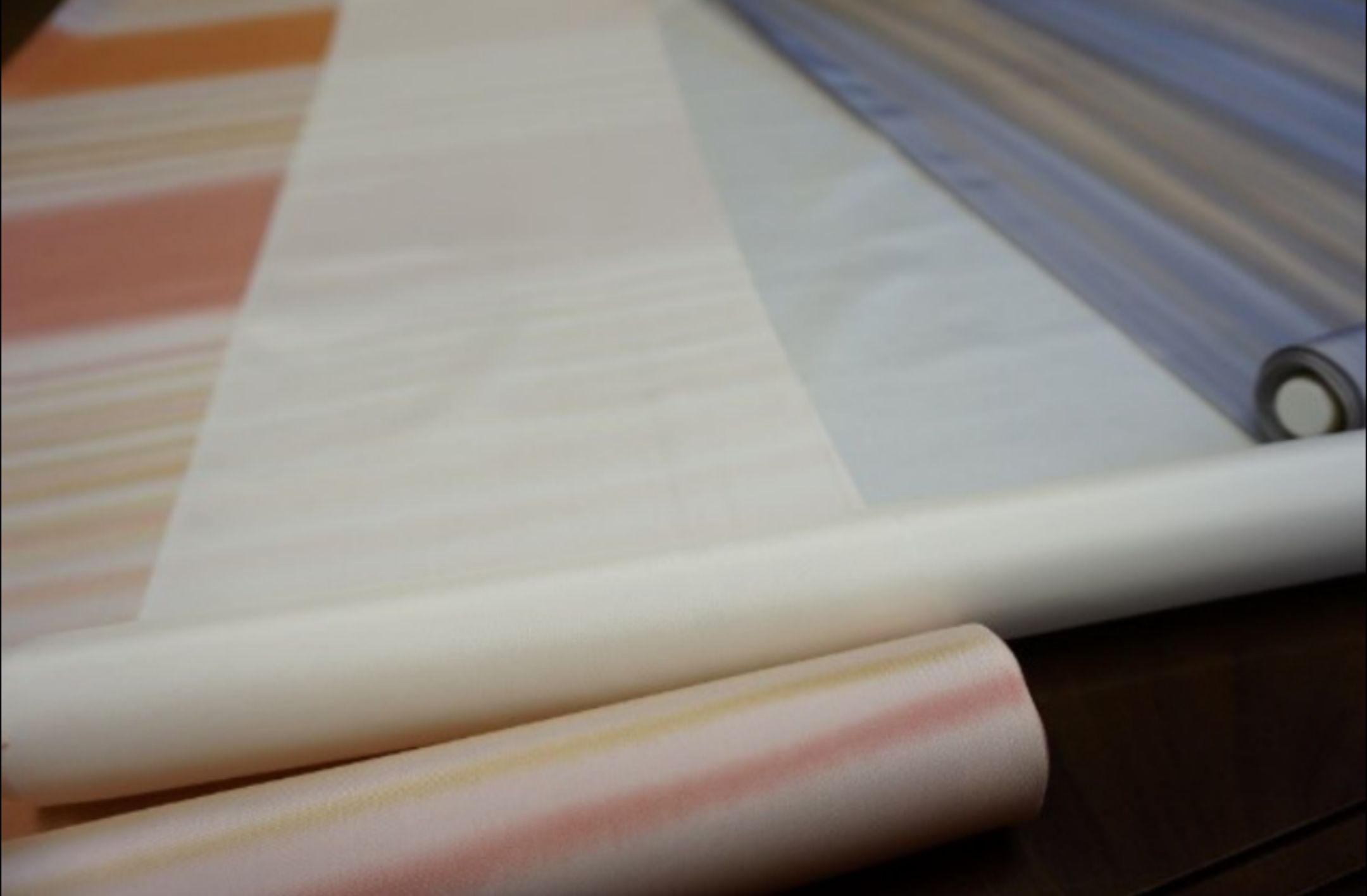
And 'Rinzu' is a damask silk with patterns woven into the fabric itself, perfect for luxurious ceremonial kimonos.
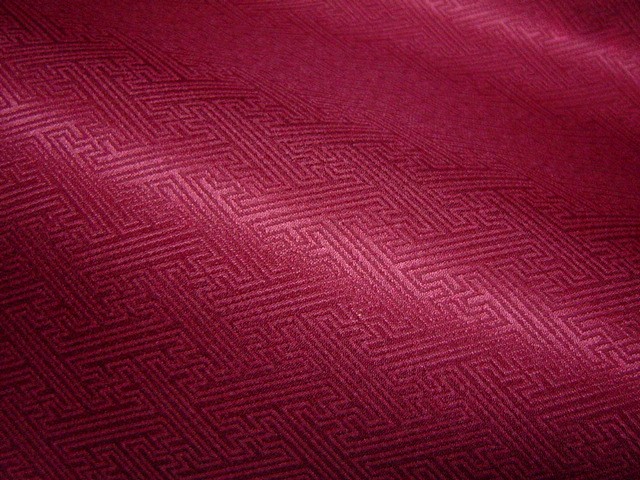
Image: Swatches of Chirimen, Habutai, and Rinzu silks.
Other Common Materials for Kimonos
While silk holds a place of honor, other materials have their roles in the versatile world of kimonos.
Cotton: The Everyday Kimono
Cotton, comfortable and breathable, is the preferred material for Yukata - the everyday kimono. Worn during the summer or for informal events, Yukatas showcase playful designs on this humble fabric.

Wool: Kimonos for Cold Days
For chilly weather, wool steps into the spotlight. 'Wafuku,' a traditional woolen kimono, combines warmth and fashion in a uniquely Japanese way.

Synthetic Fibers: A Modern Take
Innovation has also found its way into the kimono world. Synthetic fibers, while less traditional, are cost-effective and easy to care for. They bring the beauty of kimonos within everyone's reach.

Specialty Kimonos and Their Unique Materials
Kimono materials are chosen not just for their feel or look, but also for the occasion they serve. This is best exemplified in wedding and ceremonial kimonos.
Wedding Kimonos: A Symphony of Craftsmanship
Wedding kimonos, or 'Uchikake,' are grand, multi-layered garments made from heavy brocade silk. Embroidered with auspicious symbols, they are a testament to Japanese artistry.

Ceremonial Kimonos: Tradition Embodied
Ceremonial kimonos are often crafted from high-quality silk, creating an image of timeless elegance. Each stitch, pattern, and fold tells a story of tradition and ritual.

Caring for Kimonos: A Material-Dependent Task
Just as each material gives a kimono its unique characteristics, they also dictate the care required to preserve them. Silk kimonos need professional cleaning, while cotton and synthetic ones can often be cared for at home.

Silk kimonos, with their delicate fabric and intricate designs, are generally recommended for professional cleaning. However, if you find yourself in a situation where you need to clean your silk kimono at home, it's crucial to do it as gently and carefully as possible to avoid any damage.
Before starting, it's essential to remember that silk is a protein fiber, much like human hair, and should be treated with the same respect. Using harsh chemicals or rough handling can damage its texture and luster.
The Future of Kimonos: Sustainability and Beyond
As we move towards a more sustainable world, the kimono industry is also adapting. Natural materials like hemp, cotton, and silk are sustainable choices. However, efforts are also being made to make synthetic fabrics more eco-friendly.
From ancient hemp to luxurious silk and innovative synthetics, the fabrics of kimonos are as diverse as they are beautiful. They reflect not only Japan's sartorial taste but also its history, cultural values, and aspirations for the future.
FAQs
-
What is the most expensive material used in kimonos?
Silk, due to its luxurious feel and intricate production process, is the most expensive material used in kimonos. -
Are all kimonos made from silk?
No, kimonos can be made from a variety of materials, including silk, cotton, wool, and synthetic fibers. -
What is the most common material for casual kimonos?
Cotton is typically used for Yukatas, the casual kimono worn in summer or for informal events. -
How should I care for my silk kimono?
Silk kimonos require professional cleaning to maintain their sheen and prevent damage. -
Are there sustainable options for kimonos?
Yes, kimonos made from natural fibers like hemp, cotton, and silk are sustainable. The industry is also working towards more eco-friendly synthetic options.
